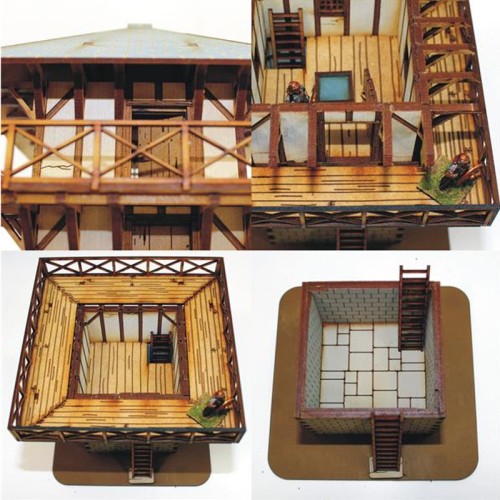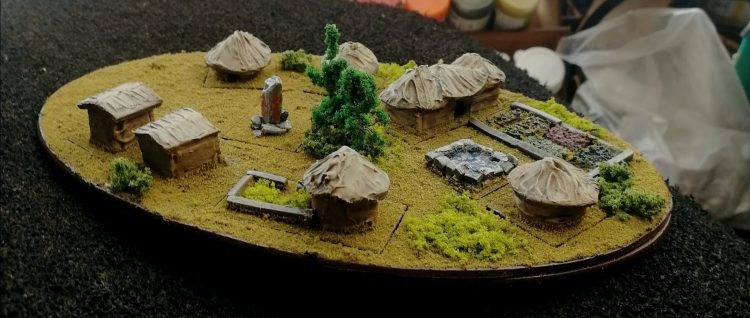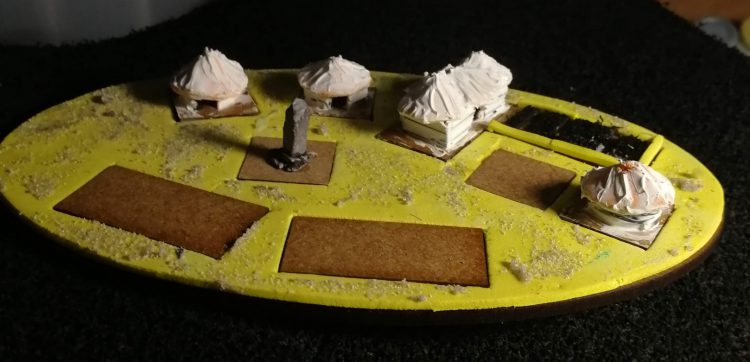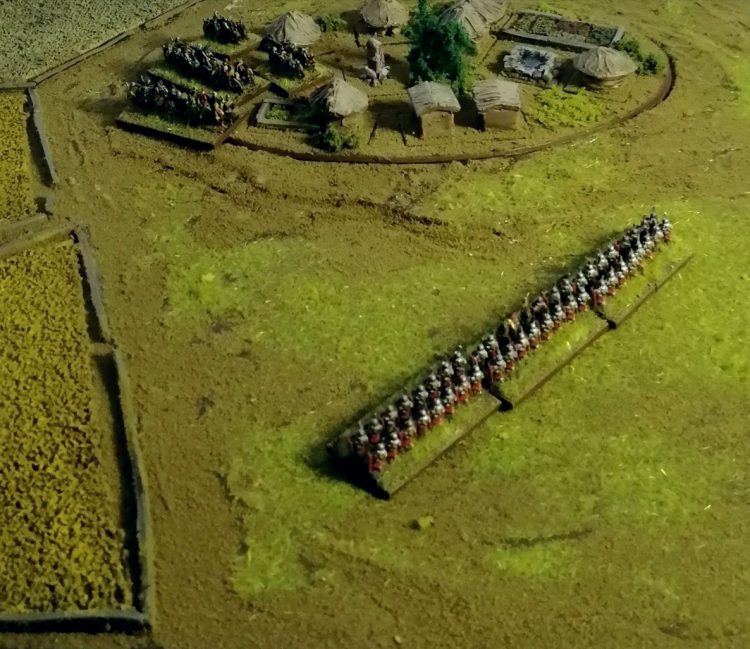In today’s article Goonhammer Historicals dives into the topic of settlements in the Roman world and how to represent them on the tabletop.
Settlements in the era of Ancient Rome took many forms – cultures were diverse even within a small geographical area, and so it’s difficult to pin down exactly what a settlement should look like. The good news about this is that you don’t have to slavishly hit any particular features – we know there was a huge amount of variation, so your variation is just as valid.
To go alongside our review of Infamy Infamy, however, we’ll be looking today at how to create a settlement in northern Roman provinces, Gaul, Germania and Britannia.
Buying a house
There are a large number of suppliers of historical terrain and scenery, and many of them sell buildings and features suitable for ancient settlements. We round up a few of the most popular here, and explain how you could best use them.
Sarissa Precision
Sarissa have an extensive selection of 28mm scenery for the period, with a great selection for Roman cities, villas and military buildings. I particularly like that they have vineyard trellises and other little touches so you can create a really fleshed out villa and working farm. Some of their kits, like the Roman baths, are astonishing in their scale and complexity, and would be an incredible centrepiece for a town board. They also have a full set for arena, ludos and stands, so you can create a full Roman gladiatorial or chariot racing experience.
There are a lot of amazing boards you could make out of these kits, but unless you’re playing something like Gangs of Rome, many of the true city streets kits aren’t going to be conducive to good play. I’d stick to a farm kit with trellises alongside some more rural terrain like stands of trees and maybe a river, to really make an engaging board.
Though their Roman range is most extensive, they do have some kits suitable for Celtic settlements. They’re a little hidden away in their dark ages range, but the Celtic roundhouse is a great kit that is cheap enough you can put a decent number down on the table. There is also a provincial Roman villa in this section which is a little odd. The timber a-frame could work well for Germanic settlements to.
4Ground
4Ground are known for their prepainted terrain, which can be appealing to hobbyists who don’t have the time to prepare an entire board themselves. Their ancient world selection at 28mm is limited with the best of it being the Limes Watch Tower. This could be a complement to other buildings, as part of a Roman occupation in Gaul or Britain. They also do an interesting selection of carts and wagons, that could be a nice addition to settlements.

Iron Gate Scenery
Iron Gate are a newer company that focuses on 3D printed terrain, and they do some absolutely enchanting 28mm terrain, focusing on smaller and more homely touches rather than big buildings. Their bakery range has totally captured my heart, and there’s no way I won’t be finding some way for these to make it onto the board. Much of what they make won’t be the main buildings or terrain itself, but instead add touches to kits like those from Sarissa to really breathe life into them.

The market stalls and goods demand a table, and a marketplace in a small town could actually give enough space to manoeuvre to be an interesting setting for gaming.
Building a home: Lupe’s 6mm scale Celtic village
The other option is to take matters into your own hands and make your settlement from scratch. This can be done at any scale but is undoubtedly easier at smaller scales.
As you can tell most of the terrain on the market is for 28mm miniatures, and as I was building my 6mm forces for this period, I wanted to make sure that I had suitable terrain. After looking at the options available, I decided I would be better off making my own and this was the result.

Pretty much everything you can see here is made of foam sheets – these can be picked up from almost any craft store, and the ones I used were brightly coloured and a couple of mm thick. A block of 40 only cost me a couple of pounds, so it’s extremely cheap, and enormously flexible and useful for making terrain at any scale so I recommend picking some up.
The round houses were made by simply cutting a strip of foam and curving it into a circle with a small gap between the ends. I glued this to the base and then cut another, a little longer this time, and formed it into a circle and glued it on top of the first ring. With this done I formed a little conical roof (cut the foam into a circle then cut out a triangular slice on one side and then pull the edges together) and popped it on top. Simple! I smoothed over the gaps with some filler – you can use anything you like, I use my trust Vallejo ground effects smooth marble mix. Primed, painted and with a little flock, and it looks great.

The longhouses were slightly more challenging, but basically made by making two round houses then connecting them with strips of foam. It took a while to get right, but it was worth it in the end. I filled the gaps and moved on to the farm buildings. These I made just with straight pieces of foam connected together, and ultimately worked similarly to the round houses.
The little cottage garden was made by making walls out of the foam, and then using some “furry foam” sheets to cut little strips of foliage. These were with the other foam in the hobby store I visited and they seem pretty common – smooth flat foam on one side, and a sort of soft hair on the other. I find these are super useful for fields and raised grasses at 6mm and recommend picking some up. You can also see some being put to use as larger fields in the terrain board picture below.
The water store was an easy thing to build – some low walls, a little padding and some gloss varnish. The standing stone was a little trickier, but I used slate chips selected to be the right shape and glued it all down, smoothing over some of the bits close to the ground with filler.
With all of the pieces on small bases, I stuck a piece of foam over a large oval base, cut holes for the bases in it, and then fitted in foliage and ground cover to make it blend more naturally. That way you can either use the whole village, or you can take a single item out and put it wherever you like. At some point I’ll be building a series of boards that will take oval bases of this size in slots, to let you modularly switch around your terrain with a lot of flexibility.

Wrapping up
That’s all for this week’s article, and for the Ancient Romans and their foes. Next week we’ll be moving on to a new era and a new location, with Getting Started that takes us to the East – so get ready for some elegant swordplay and massed battles in Japan.



